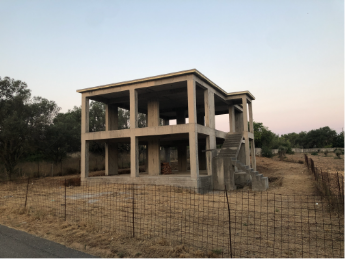Living Histories is curated by a team of students
and academics at NC State University and in Greece.
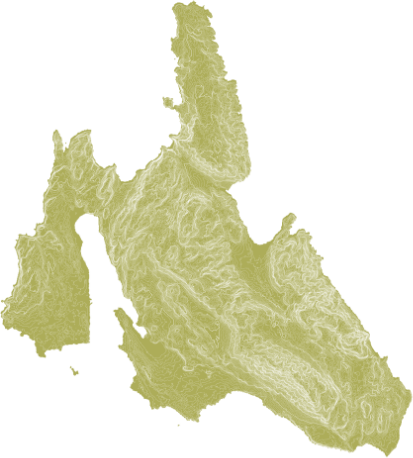
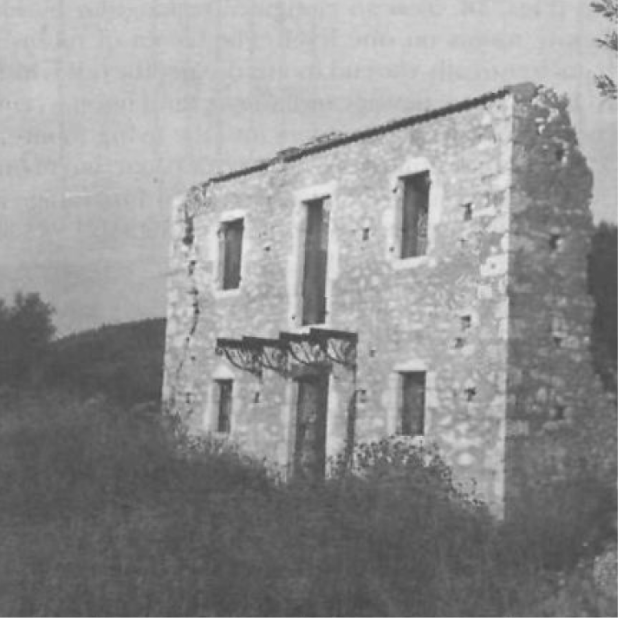
During the 18th and 19th century, improvements of roads, aqueducts, and academic institutions brought on a general sense of expansion and better overall well-being to the island. However, with the onset of the several earthquakes in 1953, the future entailed sizable rural emigration which led to the deconstruction and rejection of an already fragile way of living and traditions. Rural towns were left dead and ruined as the communities were encouraged to resettle near the coast and engage in business near and on the sea.
“Θα ήθελα να είχαν επιζήσει τα σπίτια και οι αυλές τους, τα πηγάδια και τα καλντερίμια.”
“I would have liked the houses and their yards, the wells and the cobble streets to have survived.”
“I would have liked the houses and their yards, the wells and the cobble streets to have survived.”
-- Ευρώπη Μοσχονά Καρκαβέλα Μαραγκάκη
-- Evropi Moschona Karkavela Maragaki
-- Evropi Moschona Karkavela Maragaki
“Μαζευτήκαμε και γλεντήσαμε σε ένα κλαμπ στο Αργοστόλι, 60 άτομα. Τώρα αυτό δεν συμβαίνει πια”.
“We gathered and partied at a club in Argostoli, 60 people. Now this no longer happens.”
“We gathered and partied at a club in Argostoli, 60 people. Now this no longer happens.”
-- Θεοδόσης Παπασπυρόπουλος
-- Theodosis Papaspiropoulos
-- Theodosis Papaspiropoulos
Πρακτικές
Practices (this is a speculative section
for future development)
for future development)
Through the oral histories and anecdotes, we have collected a set of practices which define and embrace sustainable Kefalonian culture.
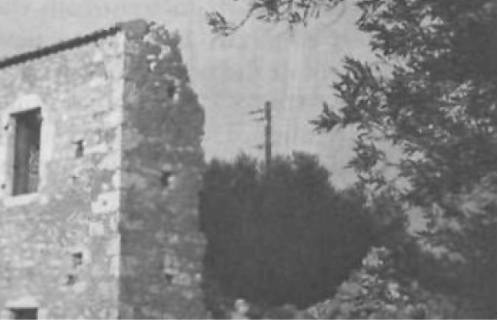
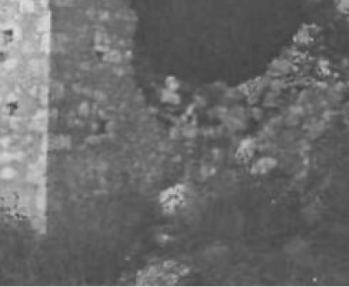
ζημιές από σεισμό, ανατολική Κεφαλονιά
Earthquake damage, eastern Kefalonia.
Earthquake damage, eastern Kefalonia.
Kefalonian Architecture
The chart to the right describes the frequency of plan forms both before and after the earthquake. As discussed above, the frequency of one-story dwellings maintained the majority after the earthquake. However, one notable difference was the alteration from a gable roof to a shallow hip. That is also partially due to the Pareto-like distribution of farmers and their respective wealth, as most farmers were detrimentally poor and could only afford to build and house one story. However, many seamen brought forward unprecedented wealth and opportunities which led to the increase in two story schemes leading up to the earthquake in 1953. residential buildings were almost entirely destroyed after the sequence of earthquakes leading to the rebuild lower near the ports and coast of Kefalonia due to the economic opportunity. As the citizens were funded to restructure their communities near the coast, the architecture responded with the rise in elevation to two-story structures especially in areas such as Argostoli.
Κεφαλονίτικη Αρχιτεκτονική
Τέχνες
Arts
Πολιτισμός & Κληρονομιά
Culture & Heritage
Παρεμβάσεις
Food & agriculture.
Πολιτισμός
Culture & Heritage



μονοκατοικία με κουζίνα δίπλα στο σπίτι
A one-story house with kitchen adjacent to house.
A one-story house with kitchen adjacent to house.
Μια ξερολιθιά, κυλινδρική καλύβα με κορυφαία οροφή, προσαρτημένη σε μια βεράντα αγρού
A dry-stone hut with corbeled roof, attached to a field terrace.
A dry-stone hut with corbeled roof, attached to a field terrace.
διώροφη κατοικία με κουζίνα δίπλα στο σπίτι
A two-story house with kitchen adjacent to house.
A two-story house with kitchen adjacent to house.
Ένα ασυνήθιστα περίτεχνο ψηλό κάλιο σε ελαιώνες
An unusually elaborate high kaliva in olive groves.
An unusually elaborate high kaliva in olive groves.
ολοκληρωμένη διώροφη κατοικία με σαλόνι και υπόγειο
A complete two-story house with saloon and basement.
A complete two-story house with saloon and basement.
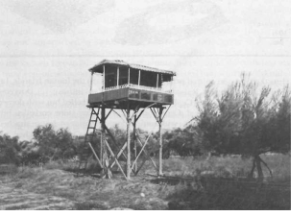
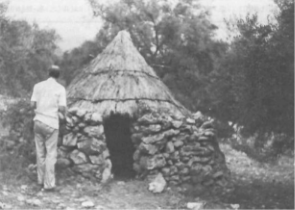
Μια κωνική καλύβα από αχυροσκεπή που χρησιμοποιείται ακόμα σε έναν ελαιώνα
A conical thatched hut still used in an olive grove
A conical thatched hut still used in an olive grove
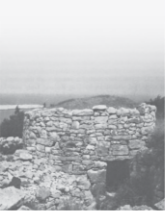
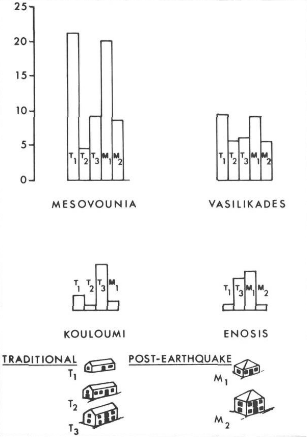
Στο διάγραμμα φαίνεται η συχνότητα των μορφών σπιτιών στα χωριά Μεσοβούνια, Βασιλικάδες, Κουλούμι και Ένωσις.
The diagram shows the frequency of house forms in the villages of Mesovounia, Vassilikades, Kouloumi and Enosis.
The diagram shows the frequency of house forms in the villages of Mesovounia, Vassilikades, Kouloumi and Enosis.
Οι πρόσφατες τεχνικές κατασκευής στην Κεφαλονιά έχουν αρχίσει να ενσωματώνουν σκυρόδεμα και χάλυβα, αλλά ακολουθούν την παραδοσιακή αισθητική.
Recent construction techniques in Kefalonia have incorporated concrete and steel construction yet are pursuing the traditional aesthetic.
Recent construction techniques in Kefalonia have incorporated concrete and steel construction yet are pursuing the traditional aesthetic.
